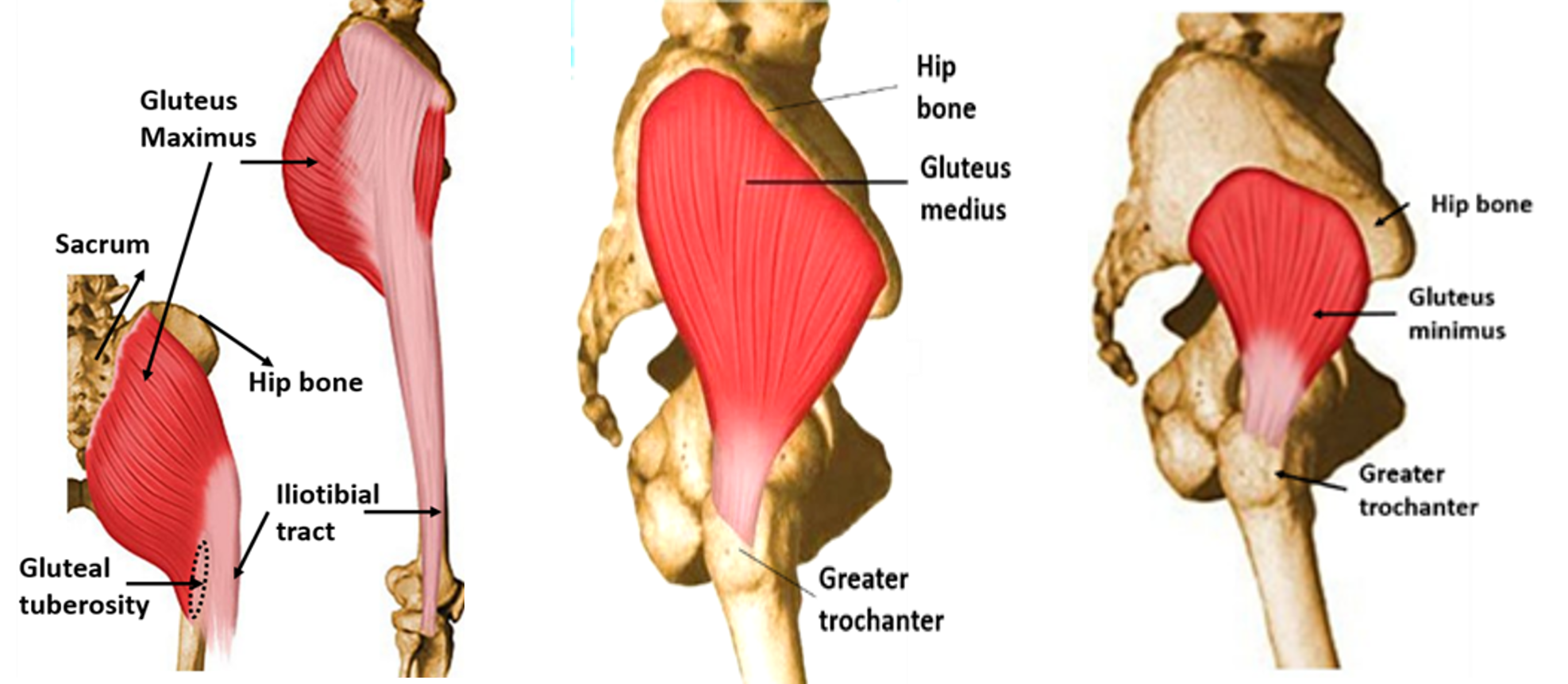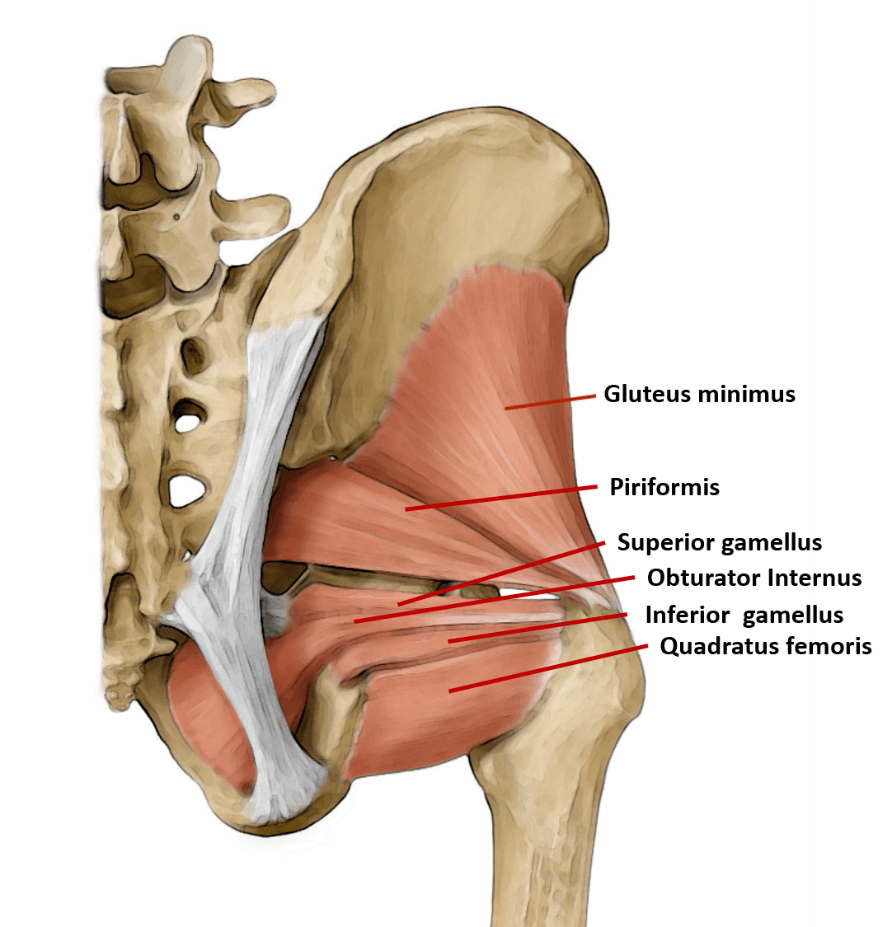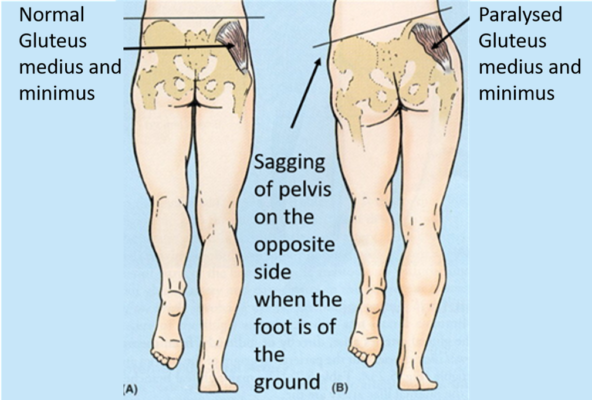Advertisements
Enumerate the musscles of gluteal region and their nerve supply.
| Name | Nerve supply | |
|---|---|---|
| Gluteal muscles | Gluteus maximus | Inferior gluteal nerve (L5,S1,S2) |
| Gluteus medius | Superior gluteal nerve (L4,L5,S1) | |
| Gluteus minimus | Superior gluteal nerve (L4,L5,S1) | |
| Lateral rotators of thigh | Piriformis | Ventral rami of S1, S2 |
| Obturator internus | Nerve to obturator internus (L5,S1,S2) | |
| Superior gamellus | Nerve to obturator internus (L5,S1,S2) | |
| Inferior gamellus | Nerve to Quadratus femoris (L4,L5,S1) | |
| Quadratus femoris | Nerve to Quadratus femoris (L4,L5,S1) | |
| Obturator externus | Obturator nerve (L2,L3,L4) | |
| Tensor fasciae latae | Superior gluteal nerve (L4,L5,S1) | |
Gluteus Maximus, Gluteus Medius & Gluteus Minimus

Write the origin, insertion and action of gluteal muscles.
| Muscle | Origin | Insertion | Action/s |
|---|---|---|---|
| Gluteal surface of ilium - above and behind the posterior gluteal line. | Superficial 3/4 th into iliotibial tract | Powerful extensor of hip joint (in getting up from sitting position, running, jumping, climbing the stairs). | |
| Gluteus maximus | Outer sloping surface of dorsal segment of iliac crest. | ||
| Dorsal surface of sacrum and coccyx. | Deep 1/4 th into gluteal tuberosity | Lateral rotation of hip joint. | |
| Posterior layer of thoracolumbar fascia. | Through iliotibial tract, keep knee in extended position. | ||
| Sacrotuberous ligament. | |||
| Gluteus medius | Gluteal surface of ilium between anterior and posterior gluteal lines | Along the oblique ridge on the lateral surface of greater trochanter | Acting from above both the muscles are the abductors of hip joint |
| Anterior fibers of both act as medial rotators of hip joint | |||
| Gluteus minimus | Gluteal surface of ilium between anterior and inferior gluteal lines | Anterior surface of greater trochanter | Acting from below both the muscles prevent sagging of pelvis on the unsupported side during walking. |
Write the origin, insertion of lateral rotators of hip joint.

| Muscle | Origin | Insertion | Action/s |
|---|---|---|---|
| Piriformis (lies partly in the pelvis and partly in the gluteal region) | E shaped origin from bars of bones between the anterior sacral foramina of 2 nd , 3 rd and 4 th sacral vertebrae. Gluteal surface of ilium close to posterior inferior iliac spine and upper margin of greater sciatic notch. | Apex of greater trochanter (the muscle reaches gluteal region by passing through the greater sciatic foramen) | Lateral rotation of hip joint |
| Obturator internus | Pelvic surface of ilium, upper part of pelvic surface of ischium, inner surface of ischiopubic ramus and ( from anterolateral walls of lesser pelvis around the obturator foramen) and obturator membrane | Medial surface of greater trochanter above the trochanteric fossa. (is inserted along with the two gamelli) Reaches gluteal region by passing through the lesser sciatic foramen | Lateral rotation of hip joint. |
| Quadratus femoris | Lateral surface of ischial tuberosity | Quadrate tubercle near the middle of the intertrochanteric crest. | Lateral rotation of hip joint |
Applied Aspect
Trendelenburg test
It is done to assesses whether the hip abductors (particularly gluteus medius and minimus) are functioning normally. The patient is observed from behind and is asked to stand on one foot and then the other.
- Negative test: Pelvis ‘tilts up’ on contralateral side
- Positive test: Pelvis ‘sags’ on contralateral side

Trendelenberg’s sign
If the patient is asked to stand on the foot of paralysed side and the pelvis sinks/sags on the unsupported side (i.e opposite side – foot is off the ground), it is known as +Trendelenberg’s sign. The affected person walks with a lurching gait. One of the reason is paralysis of gluteus medius and minimus muscles (due to injury to superior gluteal nerve).
- Other Problems that can lead to a positive Trendelenburg sign include:
- Fracture neck of femur
- Dislocation of hip joint
- Coxa Vara (decrease of the femoral neck- shaft angle to less than 1200)

this has been very helpful